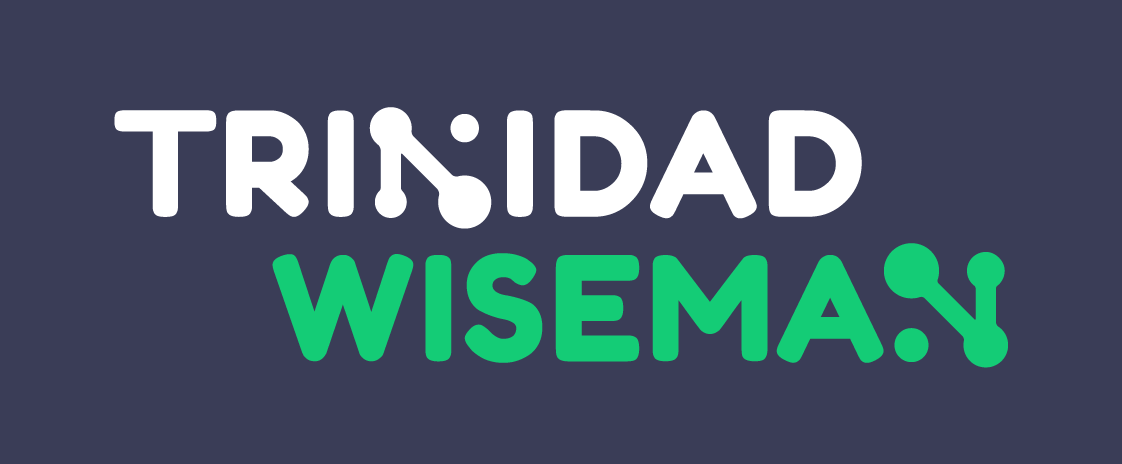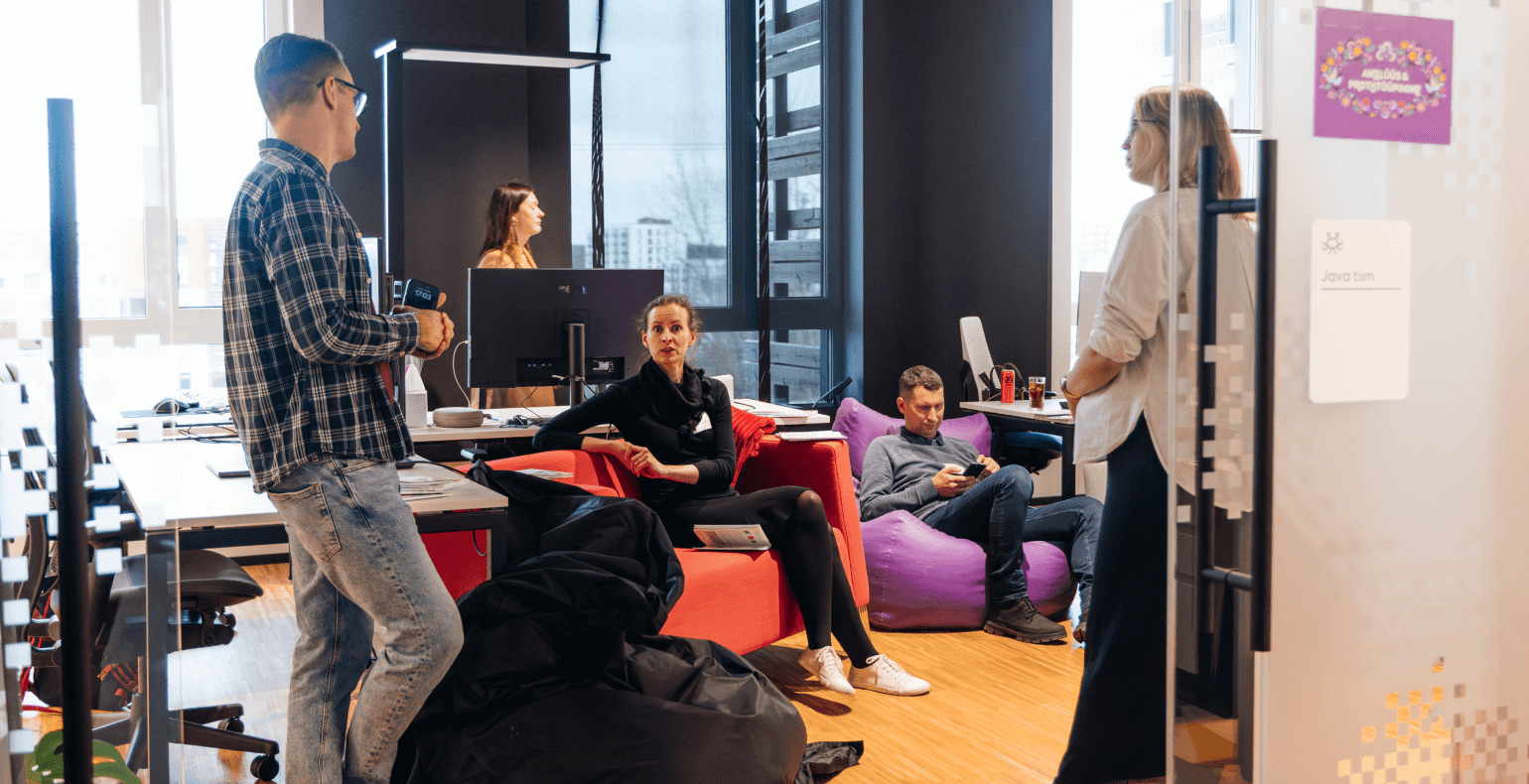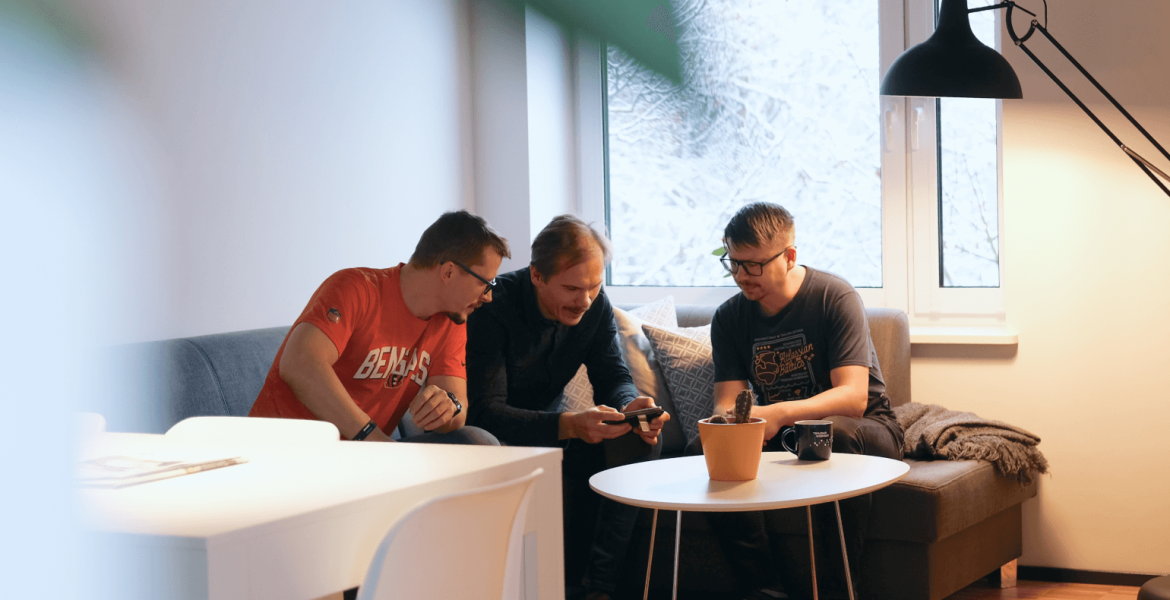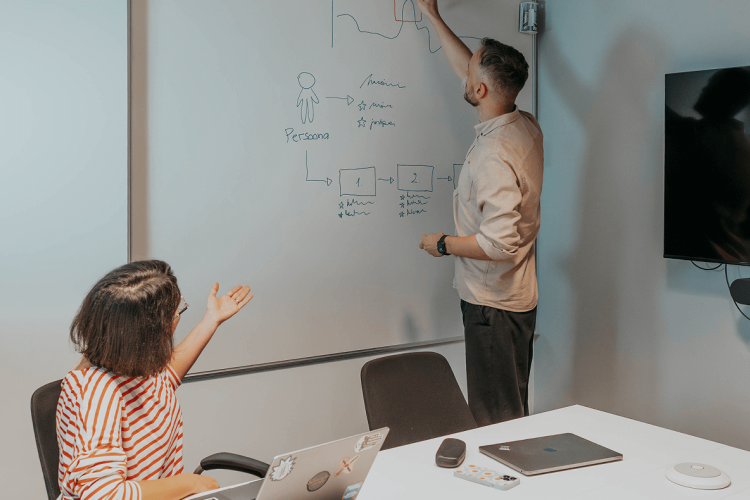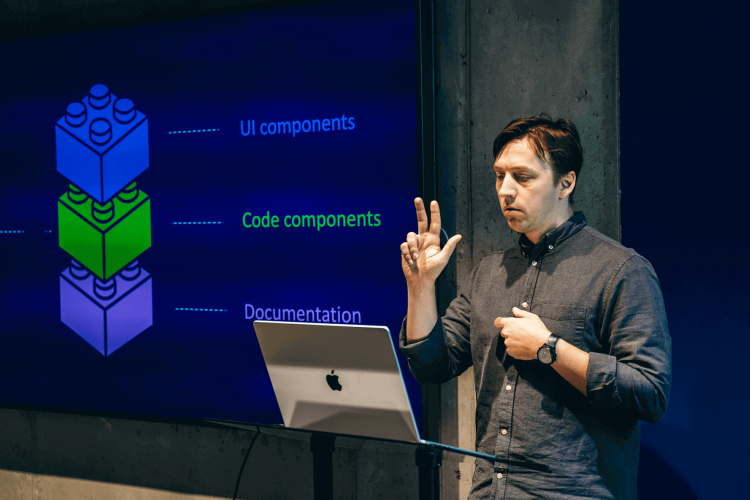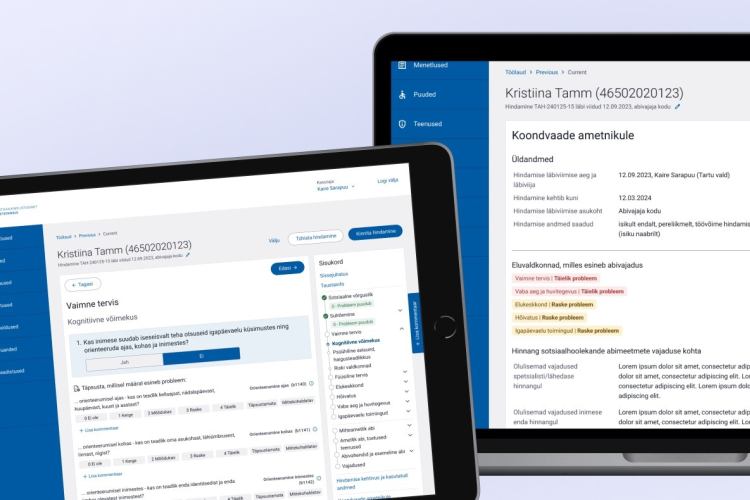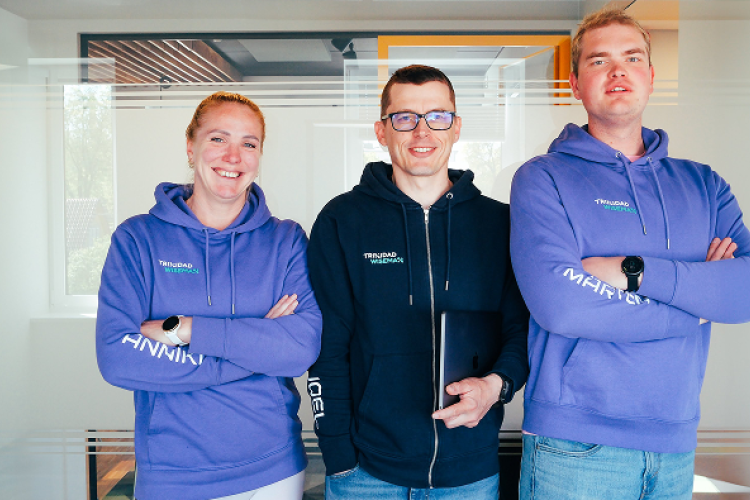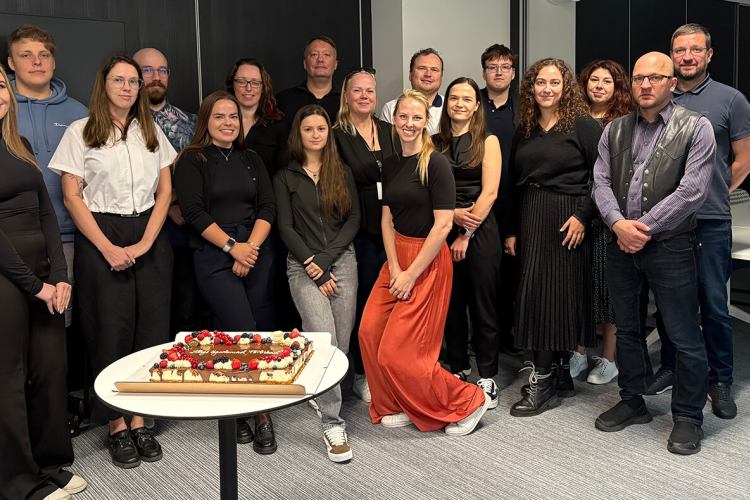Shared goal, honest cooperation – website renewal for the Estonian University of Life Sciences
The website of a large university is much more than just a source of information – it is a business card, a key marketing channel, and a digital gateway for everyone who interacts with the university.
Prospective students form their first impression of the school, international partners look for collaboration opportunities, lecturers seek information about colleagues’ work, and the broader public gains an understanding of the university’s impact.
A web update of this scale is complex in both content and technology. When I began managing the project to update the external website of the Estonian University of Life Sciences (EMÜ) at Trinidad Wiseman a little more than two years ago, I realized it would be an exciting challenge. Over the years, the site had grown into a large and multi-layered environment that was difficult to manage and update.
At the start of the project, we set a clear goal together with EMÜ: to create a modern, user-friendly, and sustainable platform that would support both internal and external audiences, enable the creation of an intranet in the future, and provide a stable technical framework that could evolve with the needs of the organization.
From the outset, the EMÜ team established guiding principles for cooperation: one common goal, open communication, and a readiness to talk about problems openly and early. This built trust and ensured effective collaboration even when difficult choices had to be made.
At Trinidad Wiseman, alongside other common platforms, we also provide Drupal development and accessibility services to ensure the best user experience for everyone. You can see examples of our projects on our website and contact us to discuss how we can support your company’s needs.
A platform that grows with the organization
Drupal was the logical choice for the EMÜ web update. Unlike many systems, Drupal doesn’t constrain us with rigid templates or plugin dependencies. This flexibility allows us to build solutions shaped exactly around the organization’s needs.
Its strength lies in a clear, modular architecture: developers have the freedom to create, while the platform maintains cohesion across content and logic. We have previously discussed Drupal’s capabilities in more detail in another article.
One of the central needs of the project was structuring the subdomains. The university has several institutes and units, each with its own target audience and identity. Drupal made it possible to create a structure with a central main site and individual subdomains for each unit, all working as part of one unified system.
This allowed content to be easily shared and reused: for example, a news item relevant to the entire university can also appear on related subdomains. Content lives in one place but flows in many directions – ensuring consistency and reducing manual work.
Another major advantage of Drupal is its administrative interface, which works well for a large number of content creators. Dozens of people from different departments, each with different roles and permissions, manage EMÜ’s website.
Drupal offers role-based access, modular content management, and content preview – all of which help keep workflows smooth and web quality consistent. We have also written separately about ways to improve ease of use on the admin side.
Drupal also supports asynchronous translation management. This means that on a multilingual site, Estonian and English content does not need to overlap one-to-one. Instead, information can be adapted to each audience. For example, details for international students are presented more extensively on the English-language site.
Compared to Node.js or other framework-based solutions, Drupal provides a stronger foundation. A CMS (content management system) does not need to be built separately – it is already integrated into the core of Drupal.
At the same time, it leaves room for custom solutions: we can integrate external software, create API-based services, and build visually unique components. This ensures flexibility without fragmenting the platform.
In addition, Drupal is secure and sustainable. Thanks to its active community and regular updates, it avoids the maze of outdated plugins that can make larger systems fragile over time (as often happens with WordPress). This ensures that the site grows with the university instead of becoming outdated with technology.
A system that holds together
The EMÜ web update was a large and multifaceted undertaking. It was not just a redesign, but the creation of a new information system that linked multiple data sources and delivered a unified user experience. Internally, it also meant managing change: staff had to let go of the old site’s familiar logic, which made the new system feel unfamiliar at first.
Each institute and several subunits received their own subdomain, with a broadly standardized framework but freedom to manage content independently. Technically, this meant 11 websites operating within a single Drupal instance. This enabled quick administration and central oversight, while still allowing units autonomy in content creation.
Integrations were a major part of the project. We connected the site to several business-critical systems: employee contact information is synchronized via the HR software, library study room reservations go directly into Outlook calendars, and more. All of these solutions were developed in close cooperation with the university’s IT unit to ensure reliable and stable data exchange.
Accessibility requirements were as important as technical stability. After all, accessibility is not just about meeting the needs of people with disabilities – it is about ensuring a high-quality user experience for everyone.
Designing with accessibility in mind allows you to create interfaces that are both aesthetically pleasing and intuitive. A good user interface doesn’t rely on flashy effects, but on clarity and logic – it should feel familiar from the very first use. Through testing and iterative design, we achieved a balance where aesthetics and accessibility worked hand in hand.
Given the site’s large volume of content, the menu was also extensive. To prevent users from getting lost, we built a structure that allows different target groups to quickly find what they need: a prospective student looking for a program, a lecturer seeking information about a research group, a partner looking for a contact, or an international student navigating a multilingual environment.
We validated the menu with multiple user tests and refined it based on feedback. For more on testing, see our article about common pitfalls in usability testing.
We also designed the solution with the future in mind: the platform can later be extended to include an intranet, with features like content sharing across subdomains, login with a university account, and integrated staff contact details.
Focus, trust, and cooperation – from complexity to clarity
A large organization inevitably involves many stakeholders and perspectives, and the academic environment adds extra weight to these opinions. In such conditions, it is easy to lose focus.
This is why close cooperation between me and EMÜ’s project manager was especially important – both to keep the project on track and to create clarity among different viewpoints. Trinidad Wiseman acted not only as a developer, but also as a partner. We helped structure needs, set priorities, and maintain focus on the big picture.
The cooperation principle established at the very beginning – “we don’t pretend and we don’t hide problems” – proved essential throughout. When difficult decisions had to be made about what to prioritize or postpone, this principle kept discussions constructive and solution-focused rather than emotional.
Communication was continuous and multi-layered: weekly working meetings, design reviews, priority discussions, workshops, and user testing feedback. This way of working allowed us to steer the process effectively while enabling the client to make well-informed decisions.
The EMÜ web project showed that complex solutions don’t require complicated relationships. With clear communication, even large projects can progress smoothly.
The path wasn’t always straightforward: for example, the introduction of a new corporate visual identity (CVI) required several adjustments along the way. Despite changes and time pressure, we delivered a solution that grew out of strong partnership.
Lessons that last
Every major project involves choices, compromises, and unexpected challenges. The EMÜ web update was no exception. With so many parties involved, we needed effective methods for decision-making: workshops, clear prioritization, and defined roles.
Time and budget constraints also tested focus – we applied an MVP approach, ensuring the most important features were completed first, with additional functionality to follow later.
Balancing accessibility requirements with visual design took testing and discussion, but ultimately ensured a result that was both attractive and user-friendly. Several technical challenges were resolved through close collaboration with the client’s IT unit, focusing on joint problem-solving rather than strict divisions of responsibility.
The biggest lesson was that technical capability alone is not enough – trust built through genuine collaboration is just as critical. Updating EMÜ’s external website was a large-scale, demanding project that combined Drupal’s technical strengths with Trinidad Wiseman’s methodological approach. The result is a modern, user-friendly, and flexible website that supports the university’s goals and grows with the organization – in content, structure, and technology.
This project demonstrated that in large, complex systems, success depends not only on technology, but also on collaboration and open communication. Successful cooperation isn’t measured by how easy the road is, but how openly partners navigate the challenges together even when circumstances change.
The EMÜ web development project, from the university’s perspective, meant juggling four balls in the air at once. First, the new website had to be innovative, accessible, audience-focused, and trustworthy – this had to be reflected in the menu structure, content layout, SEO, design, and compliance with requirements.
Second, the content and technical side had to work hand in hand: information should exist in one place and move automatically wherever possible, while content management had to be logical and convenient for users.
Third, supporting web administrators and content creators involved training, work sprints, and maintaining an active communication environment. In truth, we were doing something rather bold: creating content directly in the environment while development was still ongoing, essentially testing it on the fly.
Fourth, it was crucial to involve the entire university community and keep everyone updated so that all had a sense of where we were heading. Transparency and open, regular, and close communication were key – building an aeroplane while flying it is impossible without strong teamwork. I would not recommend repeating this approach.
Building and testing the environment first, and then moving on to content creation, would make a university website project at least a two-year journey. But it would certainly leave everyone with more nerves intact and more hair on their heads.
We are immensely grateful to Trinidad Wiseman for their cooperation and patience – this was a valuable and truly rewarding experience!
Age Rosenberg
Web Development Project Manager, Estonian University of Life Sciences
If you’re interested, read more about how we’ve applied Drupal in other projects.
